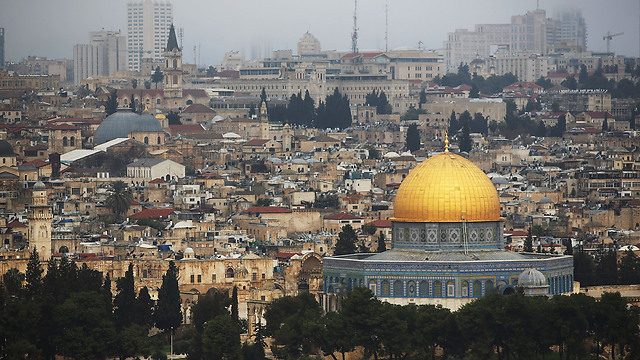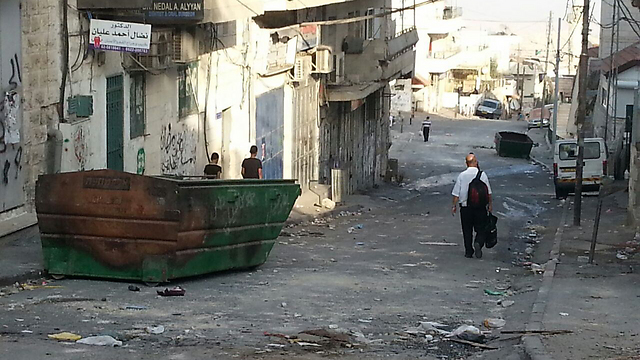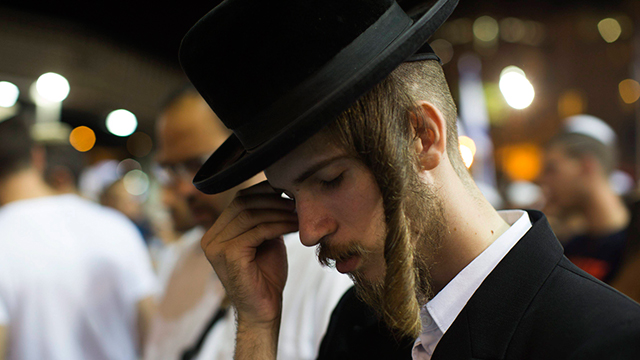Op-ed: Forget the cliche’s. A quick look at the numbers clearly shows that East and West Jerusalem cannot be split from each other. The West side’s economy is too heavily dependent on East-Jerusalem labor.
49 years have passed since Jerusalem was united, and it seems like every year the distance between the words “Jerusalem” and “united” grows farther apart. The clam that the east and west sides of the city share no real connection, and that it’s time to officially separate them, arises time and again – usually emanating from the minds and mouths of left wing of the Israeli Labor party. Their latest campaign went even further, saying that we need to act on this separation without delay. In practice, however, it seems that the connection between east and west in Jerusalem has never been stronger or deeper.
According to figures from the Jerusalem Institute for Israel Studies (JIIS), the two sides are deeply interdependent even though they’re different in almost every way. 69 percent of construction workers in Jewish areas of the Israeli capital are east-Jerusalem Arabs. If a wall were to totally separate the two, the easterners would be out of work and the westerners wouldn’t have shelter. In addition, 55 percent of transportation, storage, and postal workers in the city’s west are east-side Arabs. The same goes for 42 percent of workers in the management and support fields, 40 percent of the hospitality and dining industry, and 34 percent of commerce workers.
About five years ago, 37 percent of east-Jerusalem Arabs who were part of the workforce were employed in West Jerusalem, or in Jewish neighborhoods in the city’s east. Another 12 percent were employed in other Israeli cities and in settlements. That means about half of the workers from East Jerusalem were employed by the Jewish sector. Since then, despite questionable security circumstances, the rates of Arab workers in Jewish businesses have only grown.

Furthermore, the city’s east is highly detached from the Palestinian Authority. Only five percent of Jerusalemite Arabs work in PA territory. And just by the way, only about two percent of Jews work in East Jerusalem.
This shows us that the idea of the vast majority of Jerusalem’s Arabs being quiet people who merely want to come home safely is not just a tired cliche’. They want to make a living, raise their children, and live their lives. The terrorists among them are but a negligible few in the large scheme of things.
The employment differences between Jews and Arabs are shown in the statistics that tell us the rate of Arab people employed in “higher and more profitable” employment positions is significantly lower than their rate in the overall population of the city. For instance, only ten percent of the financial services workers in the city’s west are Arab, as well as 13 percent in education and public administration, and a mere nine percent in the fields of communications, leisure, and entertainment.
Where are the tourists going?
Some other interesting statistics can be found in the JIIS research, which tell us something about the direction in which the city is going. For instance, take the tourism industry. In 2015, Jerusalem had 77 hotels, 30 of which were in the east (three fewer than in the year 2000; average rate: NIS 492 a night), and 47 in the west (nine more than in 2000; average rate: NIS 713). The past few years have seen a gradual decline in the number of tourists staying in the west, but – surprisingly – no distinct decline in east-side hotel stays. In 2015, about 745,000 tourists from abroad stayed in Jerusalem hotels, a decline of more than ten percent from the year before.
In the past five years, 10,700 new apartments have been built in the city, with about 75 percent in the west and about 25 percent in the east. The year 2015 showed a similar split. This is interesting since the entire city is suffering a yearly immigration deficit, which is especially prevalent in certain east-side neighborhoods.

On a slightly more optimistic note, the fairly-new light rail train system has managed to connect the two sides of Jerusalem in a quite impressive way. Until recently, there was nearly no public transportation connecting the city’s east and west. The west has about 70 internal bus lines, the east about 30. But the light rail changed it all. The average number of daily passengers on the line that passes from east to west and back is 129,000.
“The interfacing between the public systems in the city’s east and west could improve in the next few years,” says JIIS researcher Yair Assaf-Shapira. “All his will allow for a significant rise in mobility, that will lead to a rise in employability and (leisure activity) for the city’s east-side residents.”
One field in which east and west are unified is, sadly, welfare. The situation in the west is bad, and even worse in the east: The Jewish rate of poverty in Jerusalem is about 28 percent – significantly higher than in the national average. The Arab rate of poverty in the city is about 80 percent.
In the years 2010-2014, the number of unemployment benefit recipients among the East Jerusalem Arab population has doubled. A significant rise in Jewish recipients has also occurred.

One last statistics blast: About 29 percent of Jerusalem’s Jews are ultra-Orthodox, 26 percent secular, 19 percent traditional, and 26 percent religious but not-ultra-Orthodox. Among Muslims, 60 percent are traditional, 34 percent religious, and only 4 percent self-identify as secular, with the remaining 2 percent being highly religious.
“The majority of Jerusalem’s population, about 56 percent, are ultra-Orthodox or Arab,” says Merrick Stern, a JIIS researcher. “In large part, the socio-economic future of Jerusalem is in the hands of the two most impoverished populations in the city. A dramatic intervention to reduce poverty levels and promote quality employment integration among the Arab and ultra-Orthodox populations is necessary for the improvement of the state of Israel’s capital, (and) without such an intervention its state may be highly severe for the next few decades.”
As reported by Ynetnews
